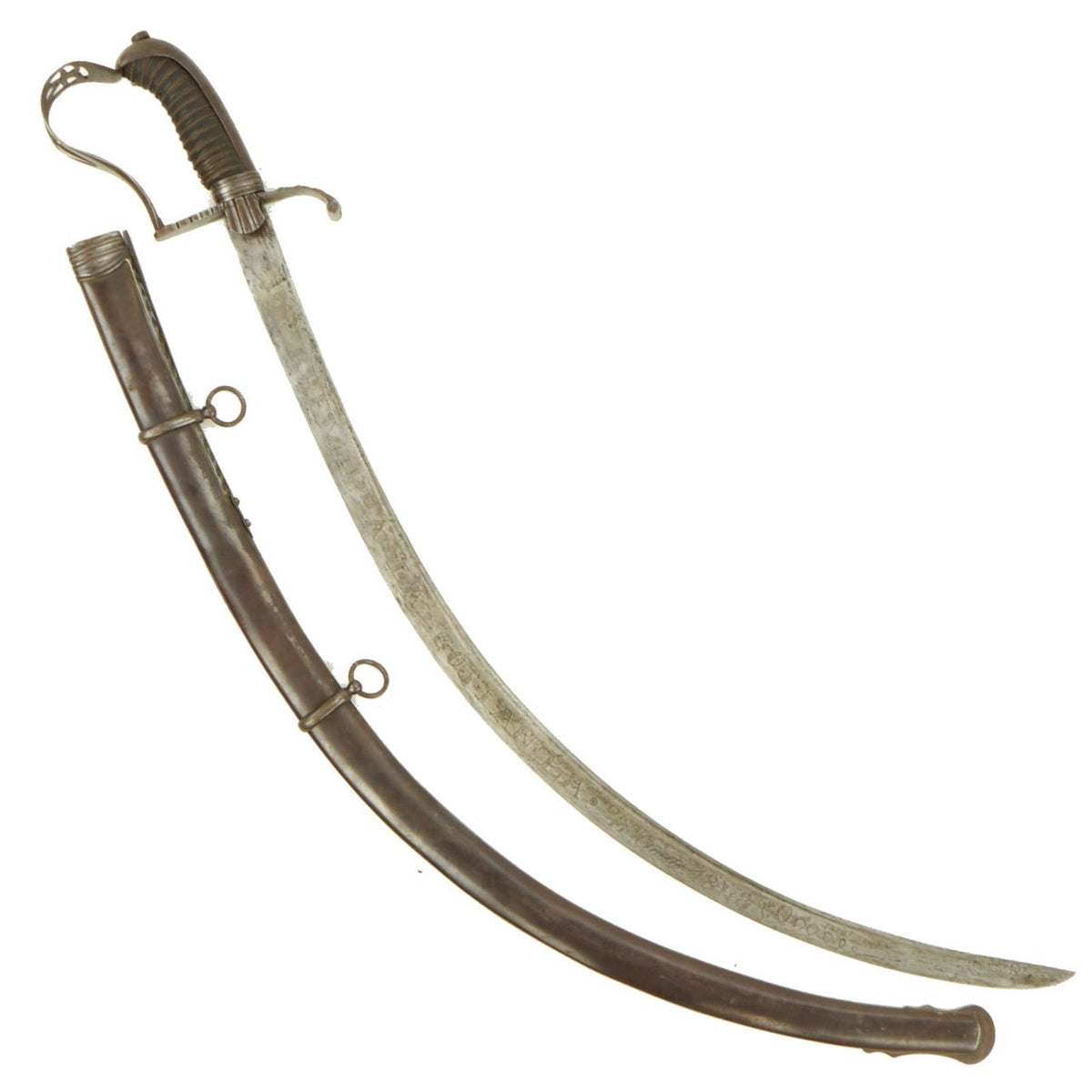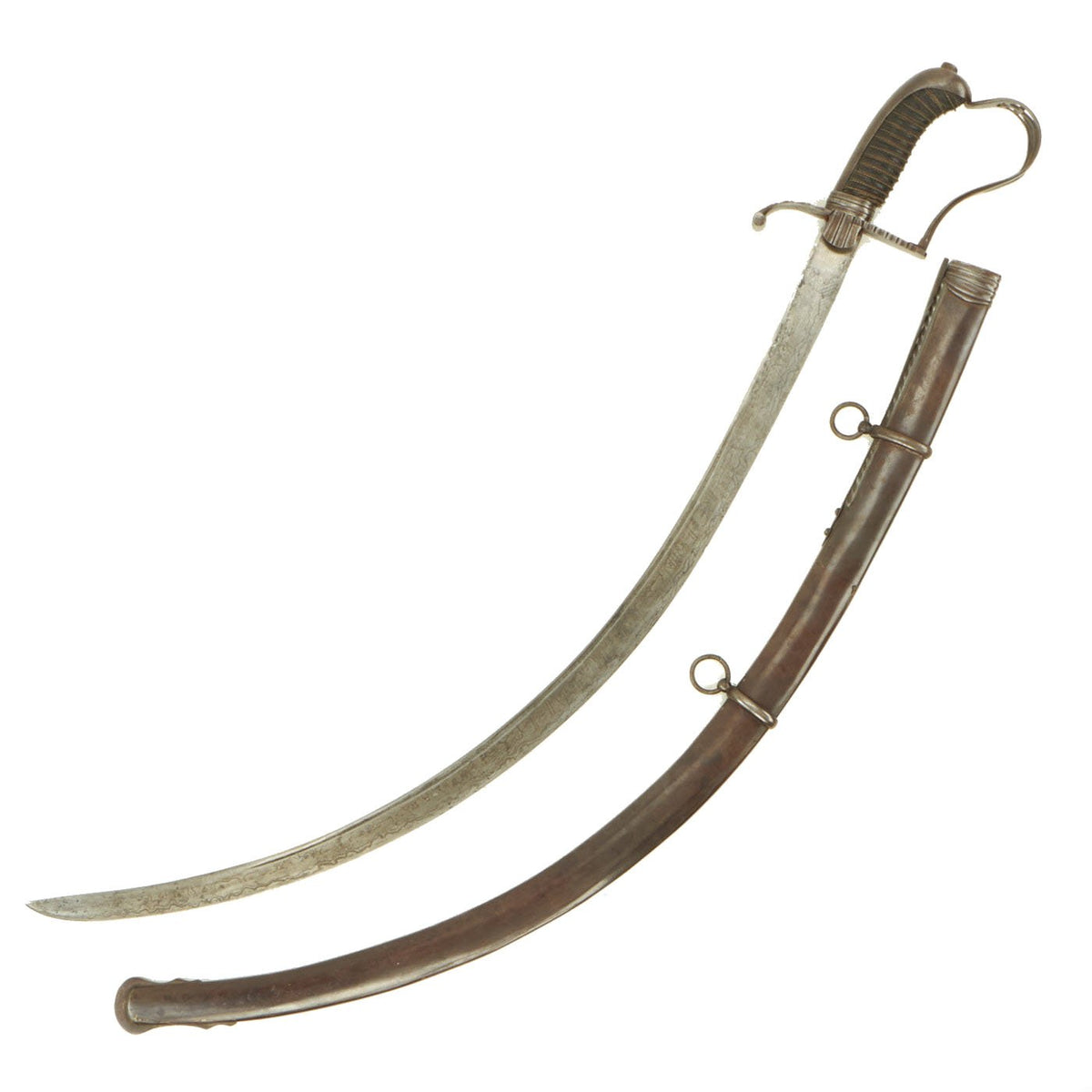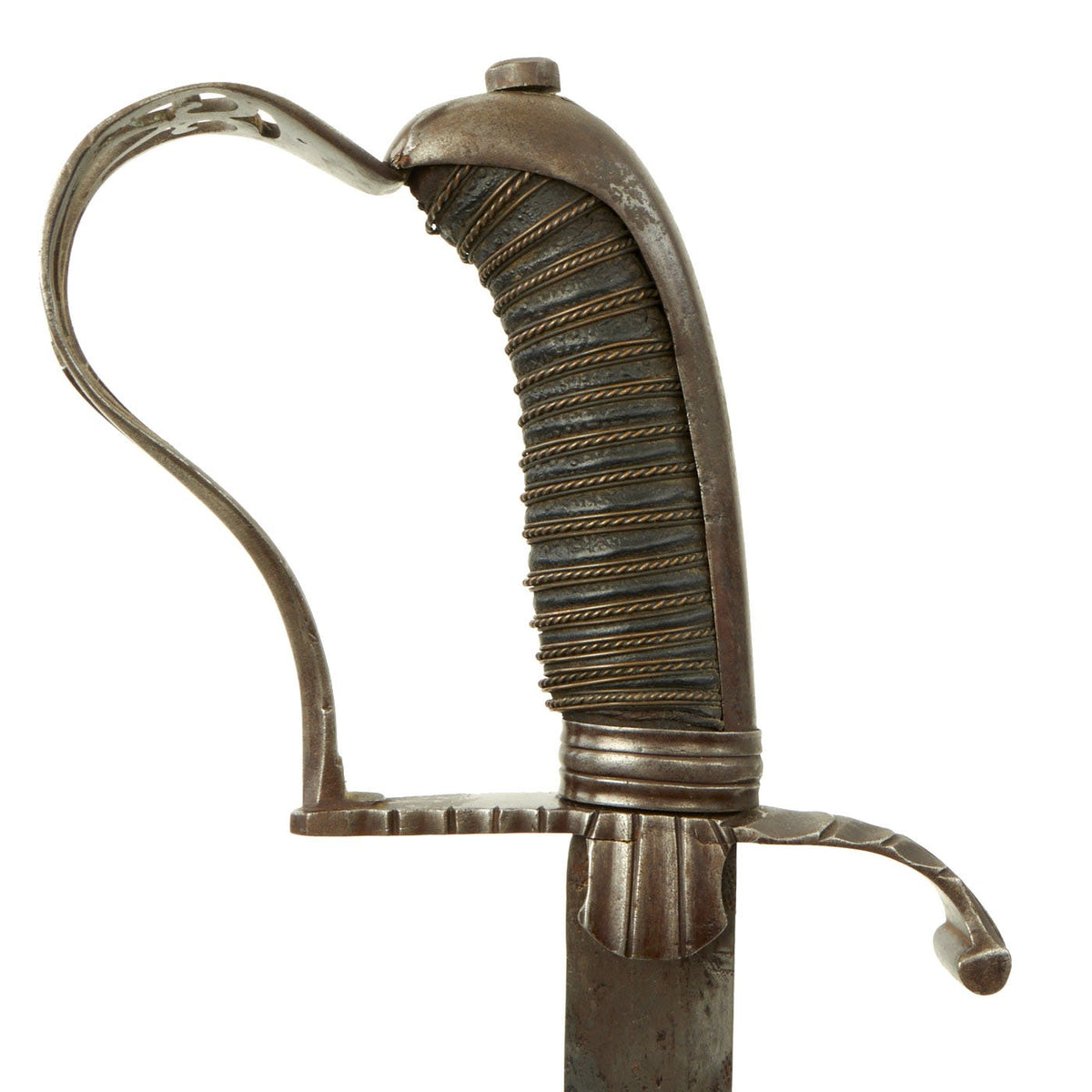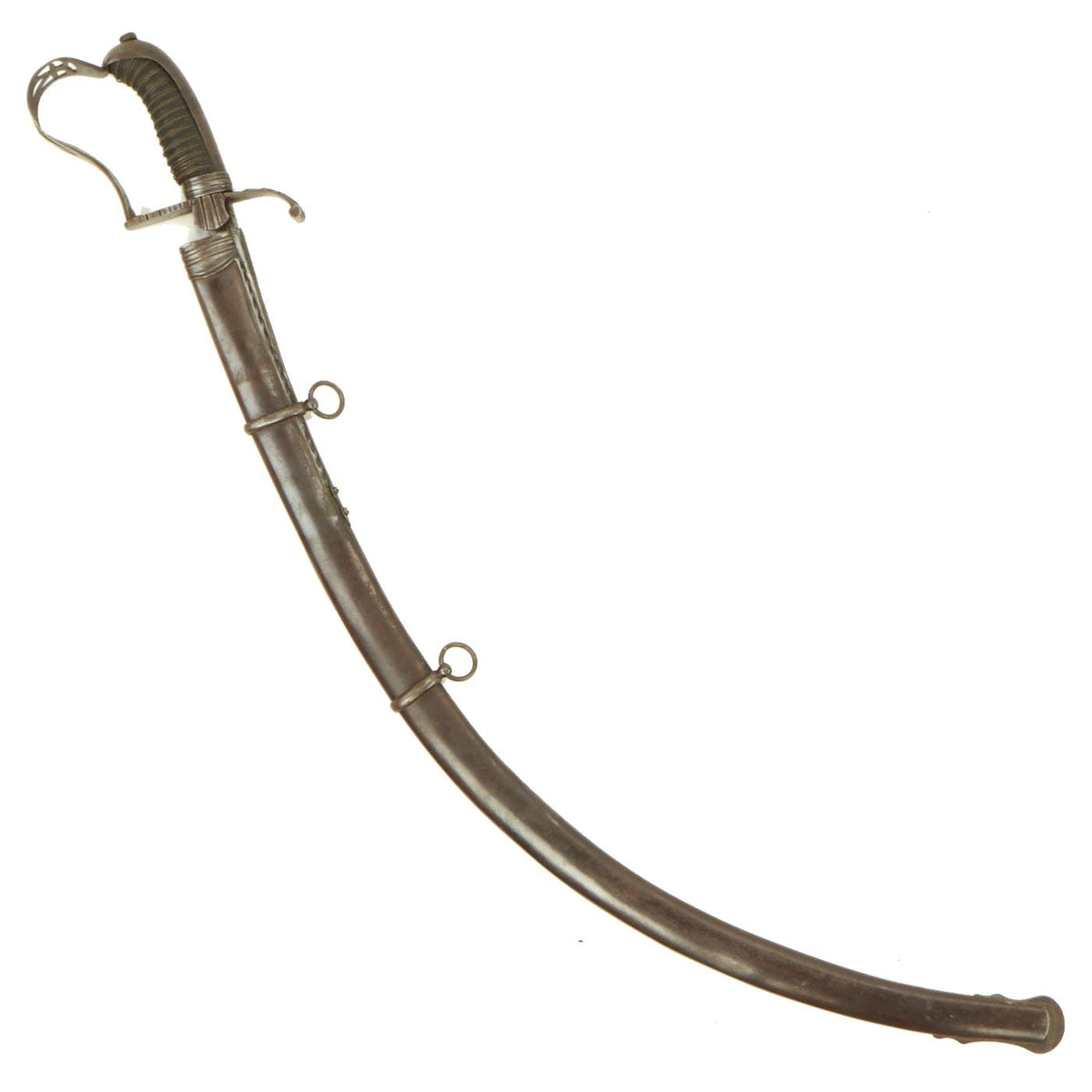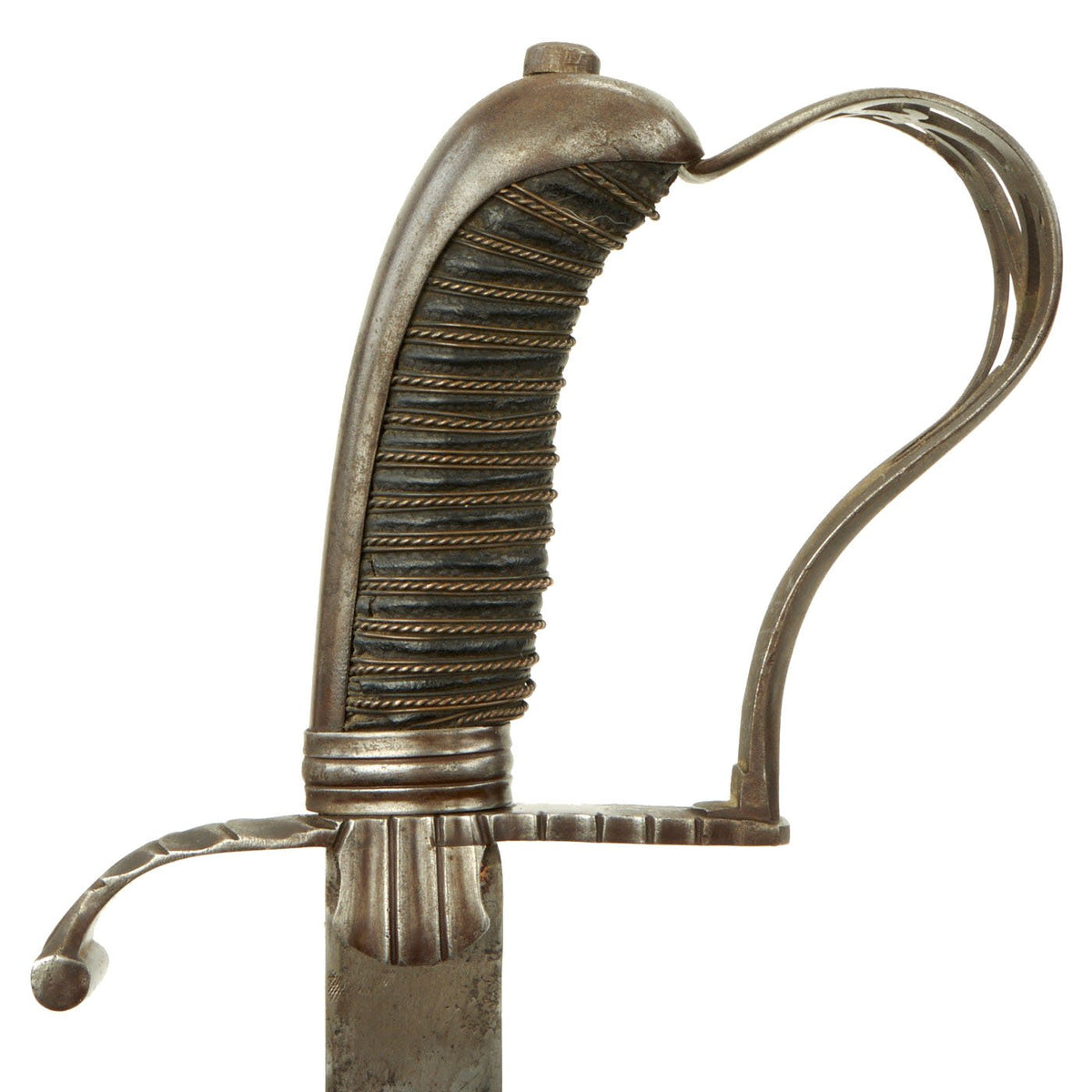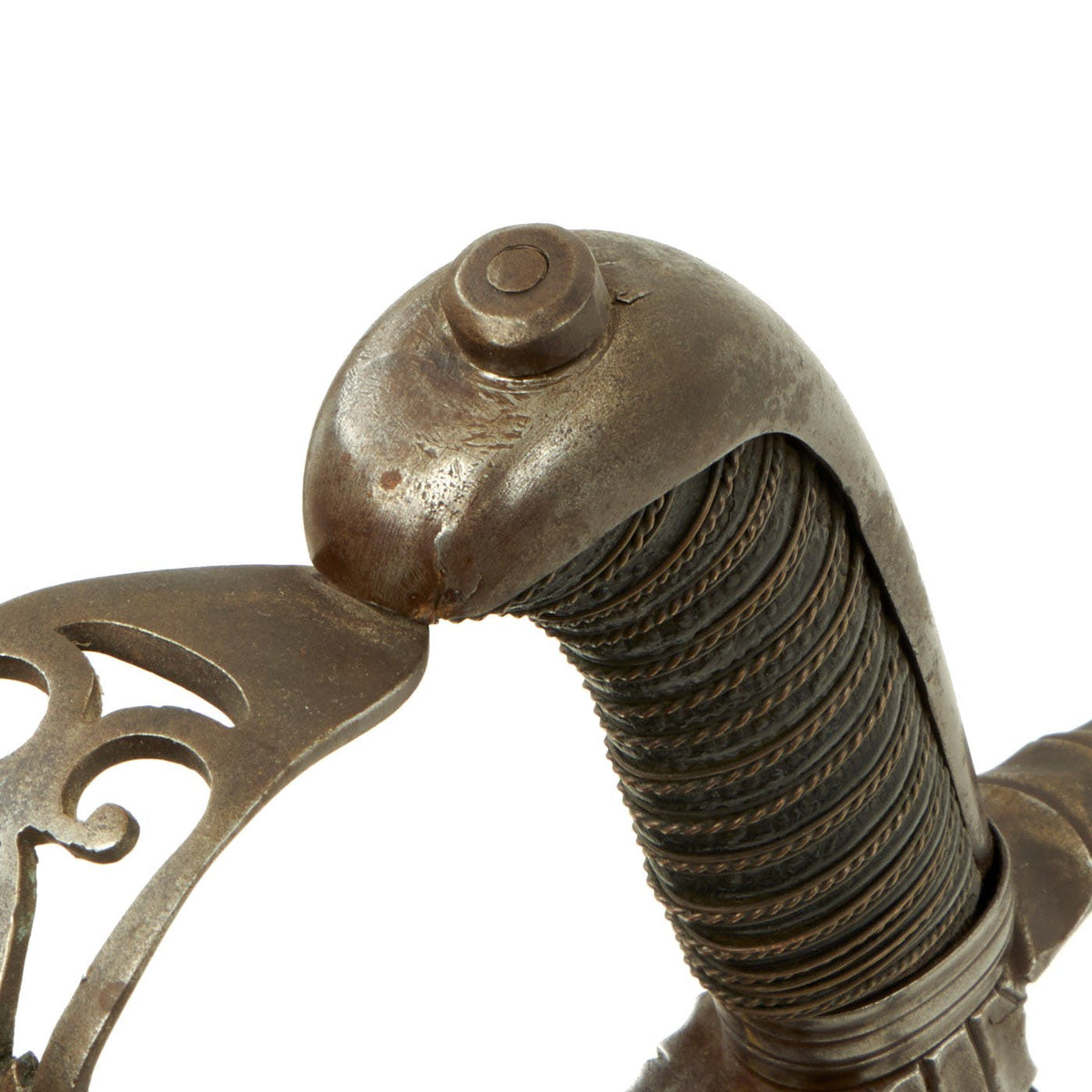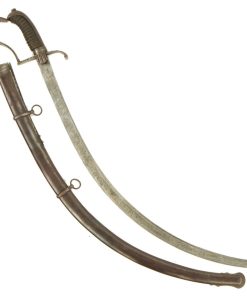Original 19th Century Austrian Officer’s Saber made from 17th Century Ottoman Wootz Steel Kilij Scimitar Blade Original Items
$ 2.995,00 $ 748,75
Original item: One of a Kind. This is an excellent and very interesting Austrian Officer’s saber, with a long history that spans centuries! The sword is beautifully constructed with a 17th Century Ottoman Wootz steel blade. It is very curved, and looks to have come from a Turkish scimitar style known as a “Kilij.” The blade almost certainly dates back to the Siege and later Battle of Vienna, which took place from July to September 1683.
The blade now features a fabulous carved steel stirrup type hilt, with a single guard enclosing the wire bound leather grip. Every aspect of the fretted steel ironwork is of magnificent quality. The all steel scabbard has been constructed with a hinged rear trap door section, which allows the very curved blade to be withdrawn and replaced in the all steel scabbard with little difficulty. All privately constructed, certainly by one of Vienna’s finest swordsmiths of the 1840s.
The very curved 17th Century Ottoman blade’s entire length is engraved on both sides with, with one side still being relatively clear, reading:-
PREMIERÀ – LA – COSTANZA – 11 Agosto 1848
This is Italian, and translates to “Constance will award, 11 August 1848”. The other side has markings as well, but they are very worn, and do not look to have been as well executed. The letters are also a different style, so it may be from when it was captured from Ottoman Turkish forces. Also, the blade is made from “Wootz Steel”, an early form of laminated crucible steel, similar to “Damascus Steel.” The texture of the blade surface makes it somewhat hard to read in the light.
Research tells us that this was perhaps a “captured war trophy” taken from a very wealthy Austrian officer, possibly during the First Italian War of Independence (Prima guerra d’indipendenza italiana). This conflict was part of the Italian Unification (Risorgimento), and fought by the Kingdom of Sardinia (Piedmont) and Italian volunteers against the Austrian Empire and other conservative states from 23 March 1848 to 22 August 1849 in the Italian Peninsula. There were also other conflicts during 1848 on the Italian islands as well.
More research is definitely needed. Perhaps someone would be able to decipher the other side of the sword with patience and a keen eye. This has a sword that has been all over Europe.
Nevertheless, this is an outstanding example of the combination of very early quality sword blade in high quality later mountings. Ready to display!
Specifications:
Blade length: 30”
Blade Style: Single Edged Very Curved Kilij Scimitar with Fuller
Overall length: 35”
Handguard: 6”L x 5″W
Scabbard length: 32”
A Kilij (from Turkish kılıç, literally “sword”) is a type of one-handed, single-edged and curved scimitar used by the Timurid Empire, Mamluk Empire, Ottoman Empire, and the later Turkic Khanates of Central Asia and Eurasian steppes. These blades developed from earlier Turko-Mongol sabers that were in use in lands invaded or influenced by the Turkic peoples.
Fast Shipping with Professional Packaging
Thanks to our longstanding association with UPS FedEx DHL, and other major international carriers, we are able to provide a range of shipping options. Our warehouse staff is expertly trained and will wrap your products according to our exact and precise specifications. Prior to shipping, your goods will be thoroughly examined and securely secured. We ship to thousands clients each day across multiple countries. This shows how we're dedicated to be the largest retailer on the internet. Warehouses and distribution centres can be located throughout Europe as well as the USA.
Note: Orders with more than one item will be assigned a processing date depending on the item.
Before shipping before shipping, we'll conduct a thorough inspection of the items you have ordered. Today, the majority of orders will be delivered within 48 hours. The delivery time will be between 3-7 days.
Returns
The stock is dynamic and we cannot completely manage it because multiple stakeholders are involved, including our factory and warehouse. So the actual stock may alter at any time. It's possible that you may not receive your order once the order has been made.
Our policy is valid for a period of 30 days. If you don't receive the product within 30 days, we are not able to issue a refund or an exchange.
You can only return an item if it is unused and in the same state as the day you received it. You must have the item in its original packaging.
Related products
Uncategorized
Uncategorized
Uncategorized
Uncategorized
Uncategorized
Uncategorized
Uncategorized
Uncategorized
Australian WWII Owen MK1 Machine Carbine SMG Custom Fabricated Replica with Sling Original Items
Uncategorized
Armored Burgonet Helmet & Polearm from Scottish Castle Leith Hall Circa 1700 Original Items
Uncategorized
Uncategorized
Uncategorized
Uncategorized
Uncategorized
Armoured Fighting Vehicles of the World: AFVs of World War One (Hardcover Book) New Made Items
Uncategorized
Angolan Rebel 1970s era 60mm Inert Display Mortar from Angolan Civil War Original Items
Uncategorized
Uncategorized
Uncategorized
Band of Brothers ORIGINAL GERMAN WWII Le. F.H. 18 10.5cm ARTILLERY PIECE Original Items
Uncategorized
